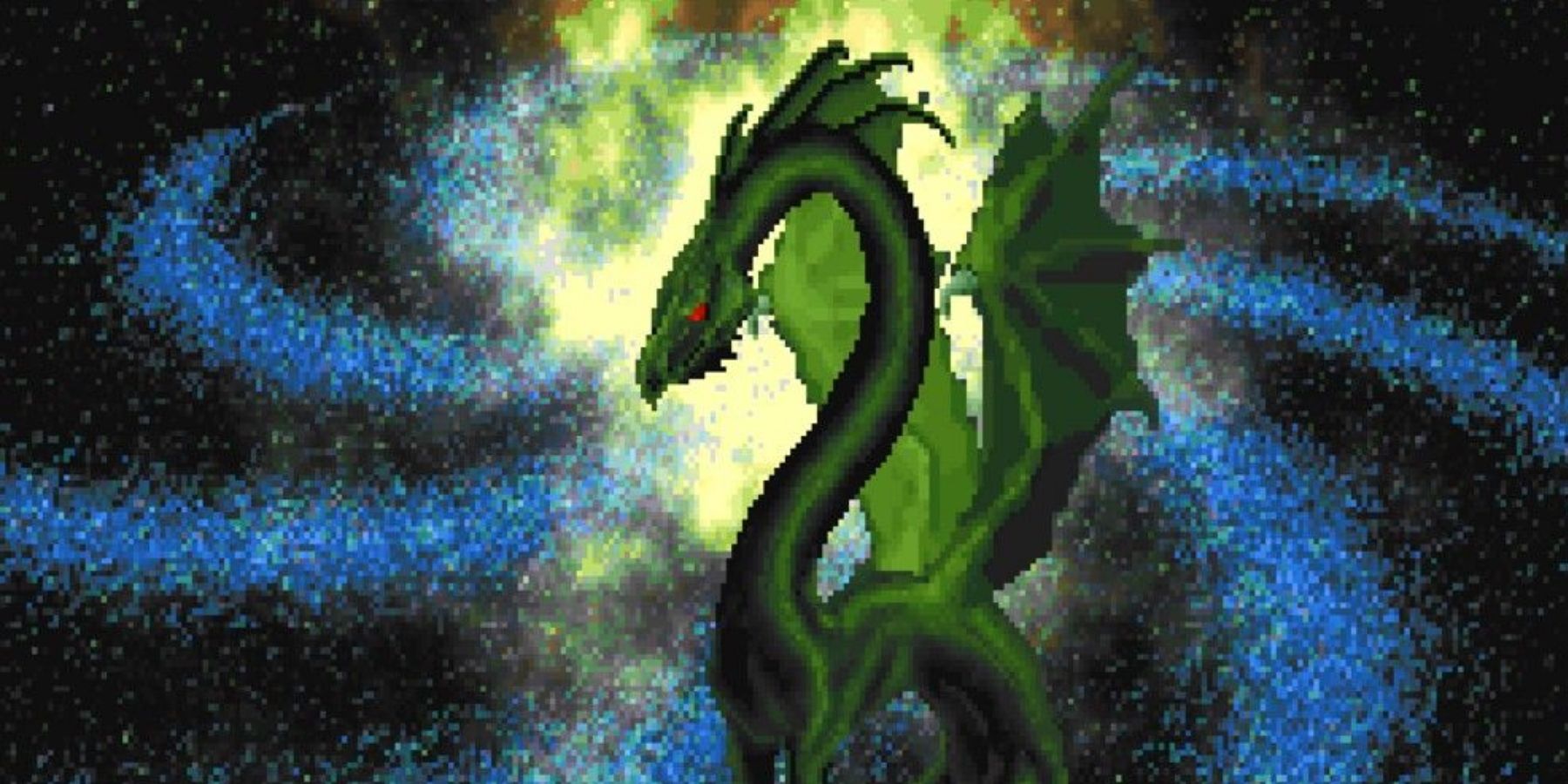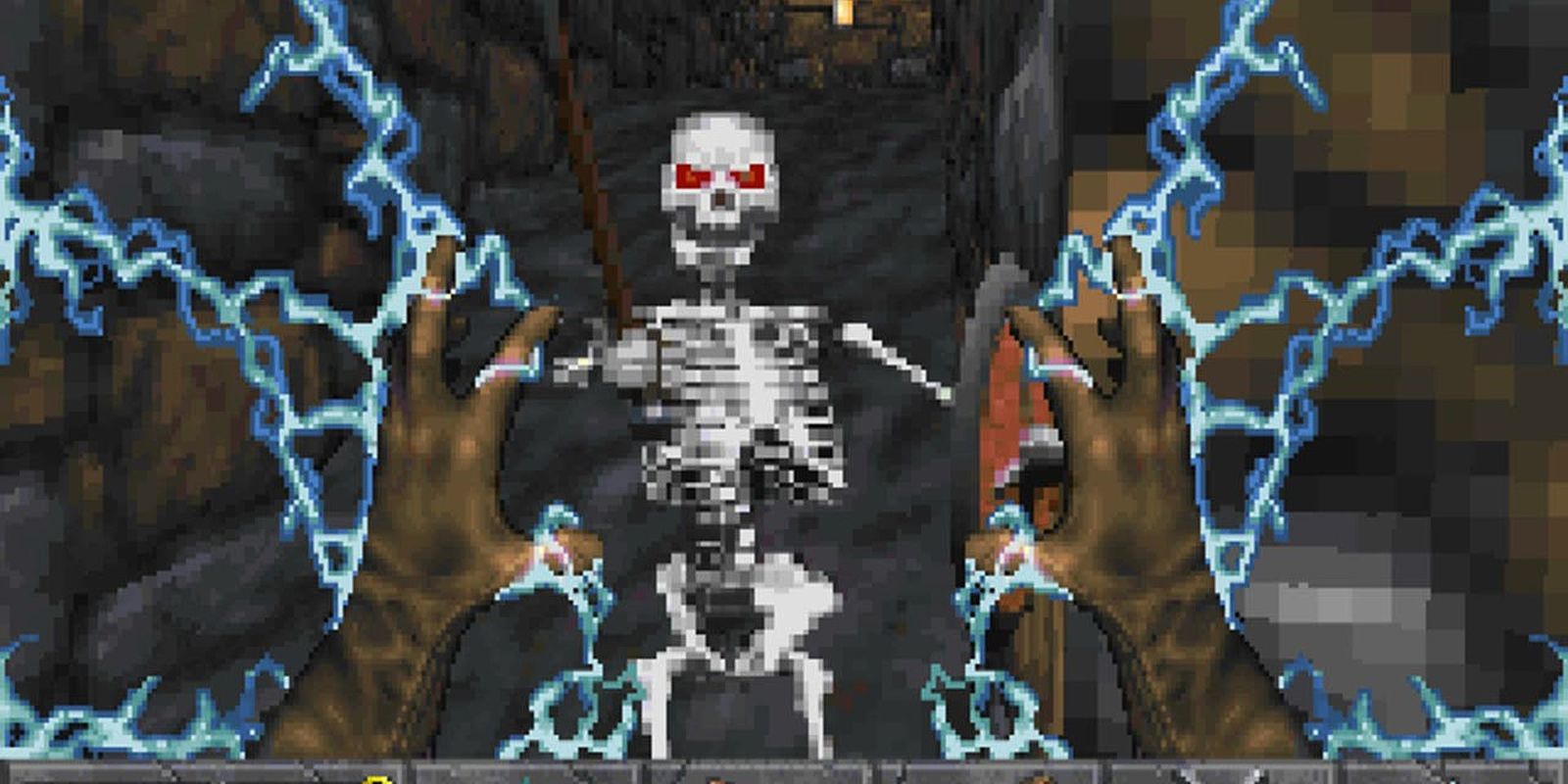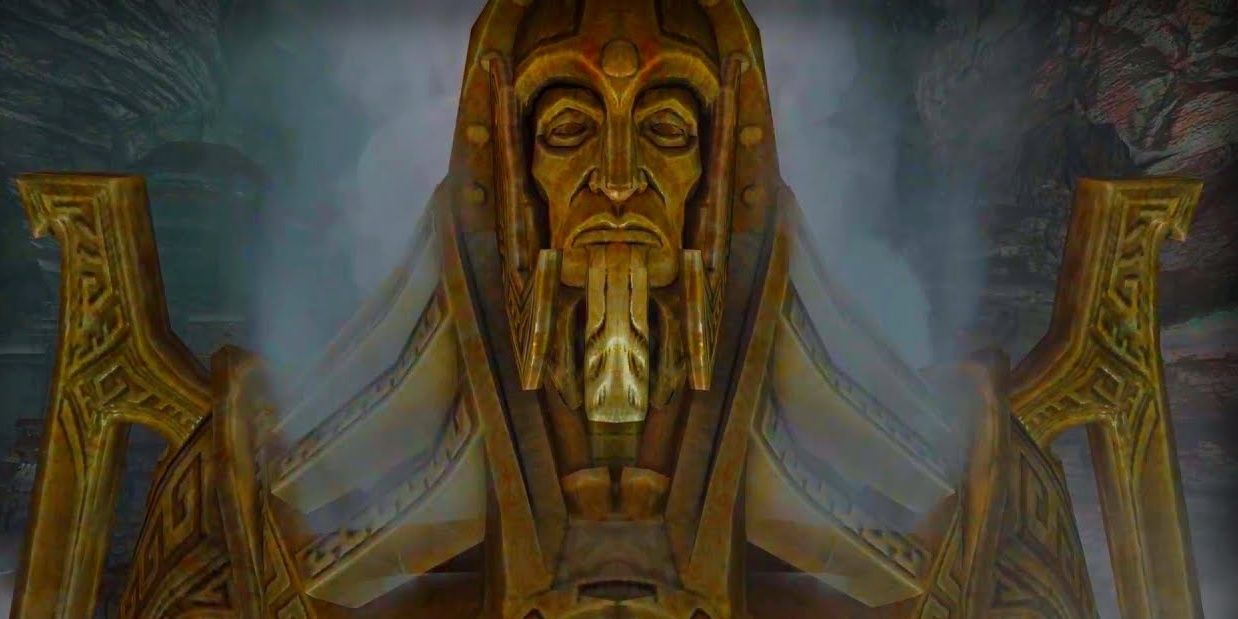Oblivion and Skyrim are known among fans for their relatively straightforward plots compared to earlier installments, but even they can’t help but hint at some of The Elder Scrolls’ stranger lore. In both games, Akatosh, the dragon god of time, plays a significant role. In Oblivion, Martin Septim becomes one with Akatosh, destroying himself to defeat Mehrunes Dagon. In Skyrim, Alduin the World Eater is himself an aspect of the god and the firstborn of Akatosh.
The god of time isn’t just responsible for some major events in-game, but some of the most interesting events to take place in between the titles as well. He gives his name to the concept of “Dragon Breaks,” one of the weirdest phenomena in The Elder Scrolls universe. Here’s how Dragon Breaks work, and how they’ve affected Tamriel so far.
The Origin Of Dragon Breaks
Dragon Breaks are one of the most unique parts of The Elder Scrolls’ setting, but they were born of necessity. The final act of The Elder Scrolls 2: Daggerfall saw the player come into possession of the Totem of Tiber Septim, an ancient artifact which could be used to activate a giant golem known as the Numidium.
The player could give the totem to any of the major factions they had encountered around the Iliac Bay so far. This included several different kingdoms, the villainous King of Worms, and the Orcs of the Wrothgarian Mountains. This would allow that faction to defeat the others, and in some cases had major implications not just for the region but all of Tamriel, such as the necromancer Mannimarco ascending to Godhood.
For a series that prizes roleplaying freedom above all else, this posed a problem when Bethesda wanted to continue the story with Morrowind. The solution came in the form of Dragon Breaks, a temporal phenomenon where multiple events take place at once before a single consistent reality emerges. In the case of the events of Daggerfall, this event became known as the Warp in the West and the Miracle of Peace.
Once the Numidium was activated, it canonically triggered a Dragon Break which created timelines in which every possible outcome took place. Once the Dragon Break was over, the Iliac Bay found itself reorganized from forty-four warring petty kingdoms into four large kingdoms with clear borders: Wayrest, Sentinel, Daggerfall, and Orsinium.
While a Dragon Break is taking place the people within experience different realities. Some fight wars that, once the Dragon Break is over, seem never to have happened. Others experience years where others only experience days. As such, when exactly the Warp in the West took place is even unclear. The events of Daggerfall take place in 3E 405, but the Warp in the West itself does not appear to have taken place until 3E 417 according to the in-universe books The Pocket Guide to the Empire and The Warp in the West.
Mannimarco himself ascended to godhood in one timeline, only to become mortal again after the Dragon Break had reconciled the different realities, hence his reappearance as an Altmer in Oblivion. Most people, excluding godlike beings like Morrowind’s Tribunal, can’t even tell that a Dragon Break has taken place. The Warp in the West was the first Dragon Break introduced by Bethesda, but it isn’t the only one to have taken place in the lore.
The Numidium And Other Dragon Breaks
It seems likely that the first activation of the Numidium by the Dwemer during the Battle of Red Mountain in the First Era also caused a Dragon Break. This is used to explain several inconsistencies in the lore, which at different times ascribed different loyalties to House Dagoth during the war, and the cause of the Dwemer’s disappearance. While it seems likely that activating the Numidium always causes a Dragon Break, Vivec also claims in Morrowind that he allowed multiple accounts to be written.
The longest Dragon Break in Tamriel’s history lasted 1008 years, from 1E 1200 until 1E 2280. A member of the Alessian Order splinter group the Marukhati Selective attempted to separate Akatosh from Auri-El, the Elven god of time. The period that followed was known as the Middle Dawn. Some sources claim that the gods began walking on the mortal plane, that people became parents to their own parents, and that Cyrodiil turned into an egg. As with all Dragon Breaks, very few people are able to remember the Middle Dawn — even the Elder Scrolls themselves cannot be used to look back at that time.
The other major known Dragon Break occurred when the Numidium came into possession of the Empire for the first time, part of Tiber Septim and Vivec's treaty. It was then that the Totem of Tiber Septim was created in an attempt to control the Numidium. The exact events of this Dragon Break are unclear, but Tiber Septim emerged the unquestioned ruler of Tamriel.
In some cases, there are questions about whether Dragon Breaks exist at all. In-universe author of The Dragon Break Fal Droon claims that Dragon Breaks were simply part of the Septim Dynasty’s founding mythology and a result of archival errors. Whether that’s true or not is part of the point — not only do Dragon Breaks allow players to imagine that any of their actions in the games are officially canon, but they also get to choose whether or not to believe that the strangest parts of the Elder Scrolls lore, like Dragon Breaks, are real at all.
The Warp in the West itself, however, is hard to deny. Many fans believe that The Elder Scrolls 6 will be returning to Daggerfall’s setting, High Rock and Hammerfell. If it does, the long-term effects of the Dragon Break could be explored in more depth than ever before, with the series changing tack and diving back into the stranger storytelling that defined the earlier Elder Scrolls games.



